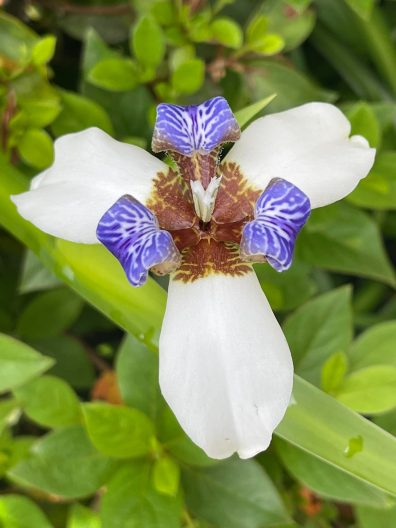 I saw this plant while visiting a friend in Florida. What is it? Can I grow it in Seattle?
I saw this plant while visiting a friend in Florida. What is it? Can I grow it in Seattle?
This is Neomarica gracilis, a plant in the iris family that is also called walking iris or apostle plant. The common name ‘walking iris’ derives from the way the plant propagates itself: as stems mature, they bend to the ground and take root (when humans propagate plants by doing this intentionally, it is called ‘layering’). The name ‘apostle plant’ refers to anecdotal observations that Neomarica will not flower until it has produced at least twelve leaves.
It is not likely to thrive in the Pacific Northwest; its native range is from Mexico and Costa Rica south to Brazil. Pacific Bulb Society lists it and other species, for adventurous gardeners who are eager to grow plants that stretch beyond our hardiness zone. Local botanist and gardener Sami Gray has this to report: “It’s a tender semitropical, so here it’s a house plant. It did well enough for me for years, then I despaired of getting it to bloom when I was looking: the flowers are very short-lived.” Daniel Sparler mentions growing a different species, Neomarica caerulea, in this Northwest Horticultural Society article: “When the mood strikes it, from tall, elegant lance-shaped foliage emerges a blossom stalk with a dozen or so coy buds that suddenly burst forth one fine morning with the most captivating purple-blue flags and falls that open to reveal intricate, internal ivory and chocolate striations. Although individual flowers last only a few hours before swooning, up to six may open at once on the same stalk.”